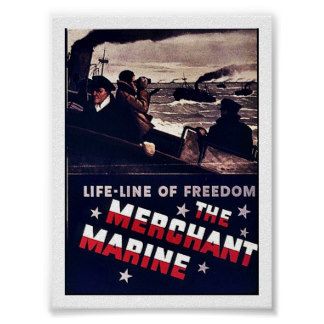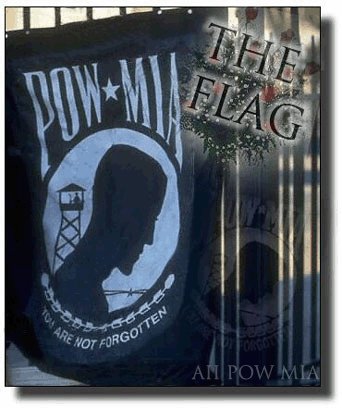|
~ The FReeper Canteen Presents ~
~ National Maritime Day (May 22nd) ~
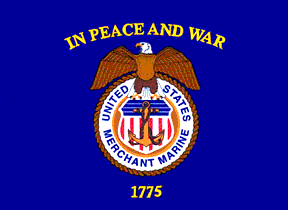

STEAMSHIP SAVANNAH - 1819 On May 22, 1819, the SS Savannah left its home port of Savannah, Georgia on its way to Liverpool, England. The ship "put to sea with steam and sails" and reached Liverpool in 29 days and four hours, becoming the first steamship to cross the Atlantic. While the steam engine performed faultlessly, it was not the only means of propulsion; historians have estimated that the Savannah was under sail 80% of the time. Nonetheless, it was an impressive achievement, one that signaled the beginning of the era of steam, and American technological leadership. The holiday was created by the United States Congress on May 20, 1933.
      
Canteen Mission Statement
Showing support and boosting the morale of
our military and our allies military
and family members of the above.
Honoring those who have served before.

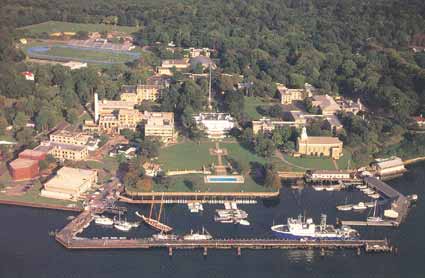
UNITED STATES MERCHANT MARINE ACADEMY
The U.S. Merchant Marine Academy (USMMA), established in 1943, is operated by the Maritime Administration of the U.S. Department of Transportation. The mission of the Academy, located on 82-waterfront acres 20 miles from New York City, is to educate and graduate officers and leaders of honor and integrity to serve in America's merchant marine, maritime and intermodal transportation industries, and the Armed Forces. Click for the rest of the story
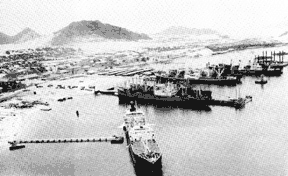 
US MERCHANT MARINE IN VIETNAM
In February 1951 the Military Sea Transportation Service (MSTS) aircraft carrier Windham Bay, was the first large ship to navigate the Long Tam River since 1925. While the ship was docked at Saigon (French Indochina) 17 hand grenades were tossed at the ship by terrorists. The Military Sea Transportation Service was established in 1949 to provide sea transportation to the military as a successor to the Army Transportation Service. MSTS operated a fleet of ships and had charter agreements with commercial shipping firms. MSTS was succeeded by Military Sealift Command. In 1954, after the partitioning of Vietnam, MSTS evacuated Vietnamese refugees from North to South Vietnam. USNS Howze was one of many MSTS ships involved in "Passage to Freedom" bringing 300,000 refugees and 200,000 tons of Cargo from North Vietnam. [Your webmistress arrived in the United States in 1949 on the USAT General R. L. Howze as a refugee of World War II.] The Military Sea Transportation Service had the job of bringing war supplies to Vietnam -- 10,000 miles from the Pacific coast. MSTS had four separate customers to serve: the Army, Air Force, Navy and Marine Corps. MSTS ships were staffed by "civilian" crews, but carried 95% of the supplies used by our Armed Forces in Vietnam including bombs and ammunition into combat zones under fire. Crew members were given Navy grades and rank identification in event of enemy capture. During Vietnam, MSTS first utilized roll-on/roll-off ships and container ships which speeded loading and unloading. Click for the rest of the story

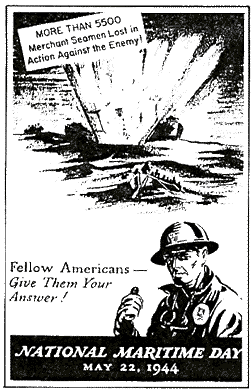
US MERCHANT MARINE IN WORLD WAR II
One way to understand the Second World War is to appreciate the critical role of merchant shipping... the availability or non-availability of merchant shipping determined what the Allies could or could not do militarily.... when sinkings of Allied merchant vessels exceeded production, when slow turnarounds, convoy delays, roundabout routing, and long voyages taxed transport severely, or when the cross-Channel invasion planned for 1942 had to be postponed for many months for reasons which included insufficient shipping. Had these ships not been produced, the war would have been in all likelihood prolonged many months, if not years. Some argue the Allies would have lost as there would not have existed the means to carry the personnel, supplies, and equipment needed by the combined Allies to defeat the Axis powers. [It took 7 to 15 tons of supplies to support one soldier for one year.] The U.S. wartime merchant fleet. . . constituted one of the most significant contributions made by any nation to the eventual winning of the Second World War. In the final assessment, the huge US merchant fleet... provided critical logistical support to the war effort. Click for the rest of the story

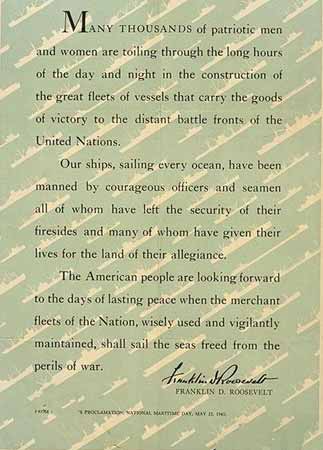 In spite of their service and their sacrifices, merchant mariners were not accorded veterans' benefits, and for many years were excluded from celebrations of Veterans' Day, Memorial Day, and other days recognizing members of the Armed Forces. One merchant marine veteran who felt the exclusion very keenly was Walter Oates, who became Public Affairs Officer at the Maritime Administration. The Maritime Administration is the successor agency to the War Shipping Administration, which oversaw the shipbuilding and merchant marine operations in World War II. Mr. Oates was a wartime graduate of the U.S. Merchant Marine Academy at Kings Point, the only one of the federal service academies to send its students into war before graduation. One hundred forty-two of those students were killed in the war, and one of them had been Mr. Oates's roommate.
In 1970, at the instigation of Mr. Oates, the Maritime Administration sponsored an observance of Maritime Day, a solemn ceremony honoring veterans of the merchant marine, and those who gave their lives in service to the United States. That observance has been held every year since then.
After a long court battle, merchant marine veterans were accorded some rights and privileges of veterans on January 19, 1988. Ten years after that, in 1998, in recognizing veterans from the Persian Gulf War, Congress included more rights and privileges for veterans of the merchant marine. The U.S. Navy Memorial in Washington, D.C., dedicated in 1987, integrates recognition of the U.S. Merchant Marine. At the dedication of the World War II Memorial in Washington, D.C., in 2004, Maritime Administrator William G. Schubert represented the merchant marine as chief of service.
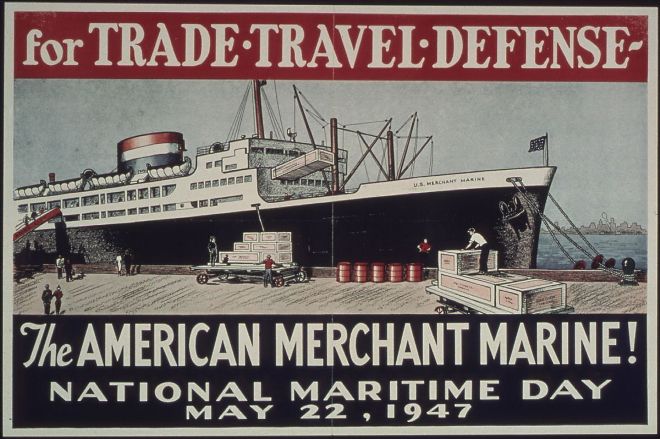

Please remember that The Canteen is here to support
and entertain our troops and veterans and their families,
and is family friendly.
|
|
|
